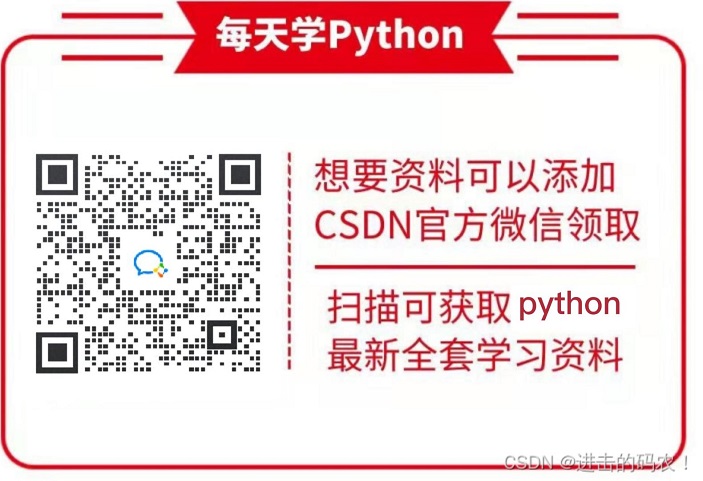Why study data analysis?(The full set of tutorials is available at the end of the article)
Are there any skills that can be used in various industries in the era of big data and artificial intelligence?
Yes, data analysis means that extracting valuable information from data is one of the necessary skills in the era of big data and artificial intelligence!
Marketers can improve marketing strategies through data analysis, product managers can gain insight into user habits through data analysis, financial practitioners can avoid investment risks through data analysis, and company executives can guide decision-making through data analysis.
No matter what industry you are in, mastering data analysis skills will make you more competitive.
How to learn data analysis?
Data analysis is an interdisciplinary subject. To put it simply, you can do some data analysis after learning to use Excel. If it is more complicated, you need to use SQL knowledge. For "advanced" ones, you need to use data analysis methods. The common ones are statistical models, such as analysis of variance, contingency analysis, linear regression, logistic regression, principal component analysis, time series, etc. And if you want to study further, you need to master data mining model algorithms such as decision trees, cluster analysis, association rules, neural networks, and random forests. In addition to learning theoretical knowledge, you also need to master some common data analysis tools, such as SPSS, SAS, R, Python, etc., and pay special attention to the learning of programming languages. Mastering a programming language can make analysis work more efficient.
The above are the basic skills that need to be mastered on the road to learning data analysis. As for how to learn? Of course, the most effective method is the method of combining theory and practice, so as to truly apply what you have learned.
Today I recommend this book "Compared with Excel, Easy to Learn Python Data Analysis". This book integrates Python, Excel, and data analysis into one, which is a major feature of this book. By comparing Excel functional operations to learn Python implementation codes, instead of learning Python codes directly, this greatly reduces the learning threshold and eliminates readers' fear of codes. It is suitable for data analysts who are new to the industry, and also suitable for data analysts who are more proficient in Excel, or professionals who want to improve work efficiency in other positions.
Without further ado, let’s show it directly:
Part 1 Getting Started
Chapter 1 Fundamentals of Data Analysis
what is data analysis
Why do data analysis
What is data analysis analyzing?
The routine process of data analysis
Data Analysis Tools: Excel and Python
…

Part II Practice
Chapter 2 Getting Familiar with Pot—Python Basics
What is Python
Python download and installation
Introducing Jupyter Notebooks
basic concept
string
Data Structures - Lists
…

Chapter 3 Pandas Data Structures
Series data structure
DataFrame tabular data structure
…

Chapter 4 Preparing Ingredients - Obtaining Data Sources
Import external data
new data
Familiar with the data
…

Chapter 5 Washing Rice and Vegetables - Data Preprocessing
Missing value handling
Duplicate value handling
Detection and handling of outliers
data type conversion
index settings
…

Chapter 6 Selection of Dishes - Data Selection
column selection
line selection
Row and column selection at the same time
…

Chapter 7 Cutting Side Dishes - Numerical Operation
value replacement
numerical sort
numerical ranking
value deletion
Numeric count
…

Chapter 8 Start Cooking - Data Crunch
arithmetic operation
comparison operation
Summary operation
…

Chapter 9 Cooking Timer - Time Series
Get the time at the current moment
Specifies the format of the date and time
Convert between string and time format
time index
time calculation
…

Chapter 10 Classification of dishes - data grouping/pivot table
data packet
pivot table
…

Chapter 11 Fruit Platter - Multi-Table Splicing
Horizontal stitching of tables
Vertical splicing of tables
Export as .xlsx file
Export as .csv file
Export files to multiple Sheets
…

Chapter 13 Dishes Arrangement - Data Visualization
what is data visualization
The basic process of data visualization
Basic elements of a chart
Visualization with Excel and Python
…

Part III Advanced
Chapter 14 Typical Data Analysis Cases
Using Python to Realize Report Automation
send email automatically
If you are a data analyst for a supermarket chain
If you are a data analyst at a bank
…

Chapter 15 NumPy Arrays
Introduction to NumPy
Generation of NumPy arrays
Data preprocessing of NumPy arrays
NumPy array reshape
NumPy array merge
…

Due to limited space, it is not shown here
Friends, if you need this complete information, you can scan the QR code of CSDN official certification below on WeChat to get it for free [guaranteed 100% free]
